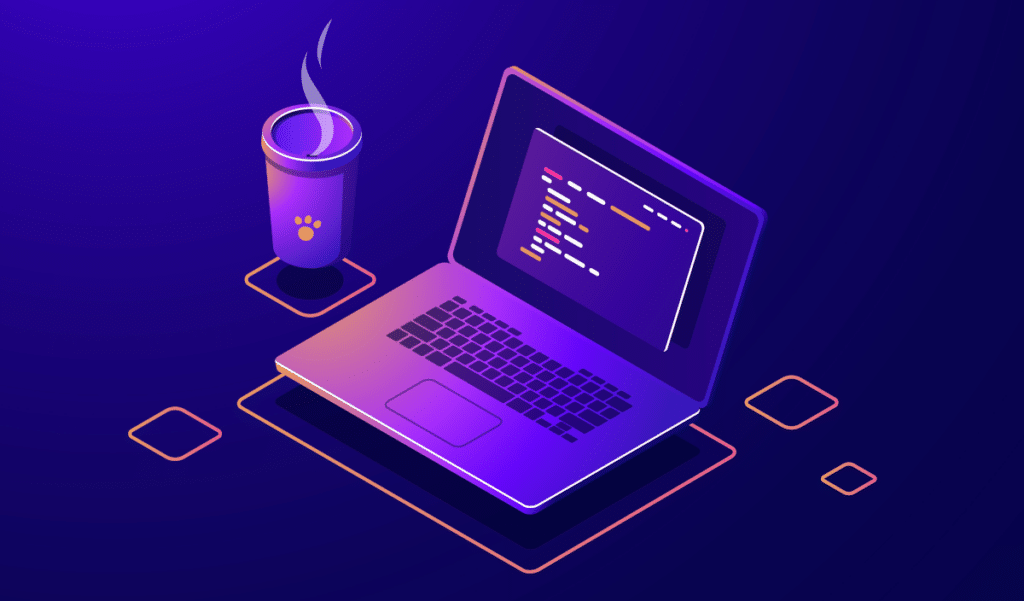Procedural programming is a programming paradigm based on the use of procedures, which are sets of instructions executed in sequence. The goal of procedural programming is to manipulate data to achieve a specific objective.
What is a Programming Paradigm?
To understand the principle of procedural programming, it’s essential to grasp the concept of a programming paradigm.
A programming paradigm is an approach or methodology of coding used to solve problems and develop software. Several programming paradigms exist, and these paradigms influence how developers write their code. The concepts and structures differ depending on the paradigm followed. Here are some commonly used programming paradigms:
- Imperative programming: This paradigm is based on specific instructions given to the computer to accomplish tasks. The code written by the developer can modify the state of the program. Procedural programming is a subset of imperative programming, distinguished by the use of procedures. These procedures are a series of instructions to be executed sequentially. C is the most commonly used imperative (and procedural) programming language.
- Object-oriented programming (OOP): This paradigm relies on objects, which are instances of classes. Java is a widely used object-oriented programming language. It focuses on creating objects (like a car, a person, or an animal) and defining their characteristics, the relationships between these objects, and any inheritance relationships they might have.
- Functional programming: This paradigm uses the nesting of multiple functions. Unlike imperative (and thus procedural) programming, there is no assignment operation in functional programming: everything is done through function calls. Recursion is heavily used in functional programming, unlike procedural programming. Haskell is a programming language that employs the core principles of functional programming.

What is a Procedure?
As mentioned earlier, procedural programming is based on the use of procedures to perform tasks. But what exactly is a procedure in computing?
A procedure is a sequence of instructions grouped under a single name, which can be called to execute a specific task. Procedures enable breaking down a program into smaller, more manageable modules. They can be invoked in various parts of the program, including within other procedures, which facilitates code reuse and enhances readability and error correction.
The Advantages of Procedural Programming
The use of procedures, a key concept in procedural programming, offers numerous advantages. Here are a few:
- The code is reusable: One of the primary benefits of procedural programming is the ability to reuse code in different parts of the program without needing to rewrite it. Once a procedure is written, it can be called as many times as needed, resulting in simpler and more readable code.
- The code is clearer: Breaking down a program into procedures makes the code clearer and easier to understand. Each procedure has a specific role, assisting developers in following their program more easily and effectively.
- Code errors are more easily corrected: By isolating specific tasks in procedures, developers can test and debug each part of the program independently. In case of an error in a program organized with procedures, a developer can locate and correct the error more quickly than in poorly organized code, leading to significant time and efficiency savings.

Main Characteristics of Procedural Programming
Procedural programming is distinct from other programming paradigms in three ways: it uses loops instead of recursion, and its code allows for data mutation.
- Use of loops: Loops, such as for loops, while loops, or do-while loops, are commonly used to repeat a set of instructions until a specific condition is met. Loops are essential in procedural programming.
- Absence (or reduced presence) of recursion: While recursion is entirely possible in procedural programming, it is used less frequently than in other types of programming, such as functional programming. Loops are typically preferred over recursion in procedural programming.
- Emphasis on data mutation: In procedural programming, data is often mutable, meaning it can be modified, allowing the programmer to process the data and update variables as needed by the program.
Example of a Procedural Programming Language: C
The C language is one of the most common examples of a procedural programming language. It enables developers to create organized and efficient programs.
Comparison with Other Programming Styles
To illustrate the differences between programming paradigms, we will look at three examples of code: one in non-procedural imperative programming, one in procedural programming, and one in object-oriented programming (OOP). We will examine a simple case: adding two integers. The first two examples will be written in C, and the third in Java.
1. Imperative Programming (non-procedural):
int main(){
int a = 1
int b = 2
int c = a + b
…
}
In this example, the instructions are executed sequentially without the use of functions or procedures.
2. Procedural Programming:
int sum(int a, int b){
return a + b;
}
int main(){
int a = 1;
int b = 2;
int c = sum(a, b);
…
}
Here, the sum function encapsulates the addition logic, and the main function orchestrates the execution, demonstrating a procedural approach. This code is relatively simple, and the benefit of using functions might not be immediately evident. However, for more complex tasks requiring several lines of code, encapsulating the task in a function that can be reused as needed provides significant time and efficiency gains.
3. Neither (object-oriented programming - Java):
public class Adder {
public int sum(int a, int b) {
return a + b;
}
public static void main(String[] args) {
int a = 1;
int b = 2;
Adder my_object = new Adder();
int c = my_object.sum(a, b);
}
}
This code defines a class, Adder, containing two methods. As in the previous examples, the sum method adds two integers. The main method is the entry point of the program and serves to test the code.
In the main method, an object of the Adder class is initialized. This step is necessary to use a method of the class.
Conclusion
Procedural programming is a fundamental approach widely used by software developers. By emphasizing the structuring of code through procedures, it offers significant benefits in terms of reusability, clarity, and maintainability. Understanding this paradigm is essential for any programmer wishing to master the basics of programming and develop effective and well-structured software.










